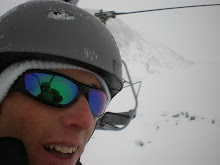Squidoo. (2009). The World is going to end at – 2012. Retrieved Friday 21st August, 2009. From http://www.apollopony.net/images/solar_storm.jpg.
James. A. (2009). How Much Information Does the Brain Hold?. Retrieved Friday 21st August, 2009. From http://www.associatedcontent.com/article/1542601/how_much_information_does_the_brain.html
CQUniversity Australia. (2009). FAHE11001: Managing E-Learning (Term 2, 2009). Retrieved May 12, 2009. From http://moodle.cqu.edu.au/course/view.php?id=134
CQUniversity Australia. (2009). Introduction. Retrieved May 12, 2009. From http://moodle.cqu.edu.au/mod/resource/view.php?id=579
CQUniversity Australia. (2009). Active Learning. Retrieved May 12, 2009. From http://moodle.cqu.edu.au/mod/resource/view.php?id=580
CQUniversity Australia. (2009). E.Learning Design. Retrieved May 12, 2009. From http://moodle.cqu.edu.au/mod/resource/view.php?id=641
CQUniversity Australia. (2009). Delivery Technologies. Retrieved May 12, 2009. From http://moodle.cqu.edu.au/mod/resource/view.php?id=671
CQUniversity Australia. (2009). Student Centered Technologies. Retrieved May 12, 2009. From http://moodle.cqu.edu.au/mod/resource/view.php?id=696
Wong, V. (2009). ACT Knowledge and Networking. Retrieved August 1, 2009. From http://blog.act360.com/
Oddcast Inc. (2008). Voki. Retrieved August 2, 2009. From http://www.voki.com/
Thorlabs. (2009). RSS Feeds. Retrieved August 4, 2009. From http://www.thorlabs.com/feeds.cfm
Wetpaint.com inc. (2009) Wetpaint. Retrieved August 12, 2009. From http://www.wetpaint.com/
Tangient LLC. (2009). Wikispaces. Retrieved August 12, 2009. From http://www.wikispaces.com/
Mahara. (2009). Open Source ePortfolios. Retrieved August 13, 2009. From http://cqu-mahara.netspot.com.au/
Interactive Whitboards. (2009). Interactive Whiteboards Australia. Retrieved August 14, 2009. From http://www.interactivewhiteboards.com.au/index.html
YouTube, LLC. (2009). YouTube. Retrieved August 14, 2009. From http://www.youtube.com/
TeacherTube.com. (2009). TeacherTube. Retrieved August 14, 2009. From http://teachertube.com/
Gembiz. (2009). Content Management System Demonstration website. Retrieved August 15, 2009. From http://demo.gembiz.co.uk/index.php?pageId=10
Yahoo!. (2009) Flickr. Retrieved August 15, 2009. From http://www.flickr.com/
Fanning, F. (2009). Image Manipulation. Retrieved August 15, 2009. From http://www.stevefanning.com/image_manipulation.htm
Picnik Inc. (2009). Photo Editing Made Fun. Retrieved August 15, 2009. From http://www.picnik.com/
Froguts. (2009). Froguts. Retrieved August 16, 2009. From http://www.froguts.com/flash_content/index.html
Gizmos. (2009). Explore eLearning. Retrieved August 16, 2009. From http://www.explorelearning.com/
ClassMaker. (2009) Free Quiz Maker for Online Testing. Retrieved August 16, 2009. From http://www.classmarker.com/
Google. (2009) Google Earth. Retrieved August 18, 2009. From http://earth.google.com/
MediaWiki. (2009) Wikipedia The Free Encyclopedia. Retrieved August 19, 2009. From http://en.wikipedia.org/wiki/Main_Page
Slideshare Inc. (2009). SlideShare Present Yourself. Retrieved August 19, 2009. From http://www.slideshare.net/login?from_logout=1
MediaFile. (2009). Free File Hosting Made Simple. Retrieved August 19, 2009. From http://www.mediafire.com/
Incompetech. (2009). Using Music on the Web. Retrieved August 20, 2009. From http://incompetech.com/
VoiceThread. (2009) VoiceThread. Retrieved August 20, 2009. From http://voicethread.com/#home
Ning. (2009). Social Networking. Retrieved August 20, 2009. From http://www.ning.com/
Wood, J. T. (2004). Interpersonal Communication Everyday Encounters. (14th ed.). Belmont, CA, USA. Holly J. Allen.
The 25 tools of Technology that we look at included:
1. Blogs and Aggregators
3. Mahara
5. PowerPoint
7. Interactive Whiteboards
9. Static Websites

11. Image Manipulation
13. Quizzes
15. Podcasting
17. Webquests
19. Slideshare
21. Using music on the Web
23. RSS Feeds
25. Digital Story Telling
The Internet is another world, the more we find out about who we are the more the internet will expand. However there is a problem, the more advanced we get the more we communicate with each other. We’re no longer in the days where you can write a letter and then weeks or even months later that person will receive what you sent. We are in the days where things are instant and this can and are a problem. As a teacher or even as a parent when using the internet we have to always be aware of what our kids are doing, creating or saying. As a parent you know you would not allow your child to go somewhere unless you knew it was safe. This is how we need to monitor our kids and even ourselves. We don’t want our kids/student and even ourselves to be caught up in any exposure with inappropriate material, any physical danger, or any harassment or bullying but we want to protect their privacy.
The more I used these tools and the more I found out about them through talking with my lecturer, my fellow classmates and to what I was following through the portal, it is a risk using these things but with the way the world is going, these are the best tools to be using in the classroom. Our kids want to know more and if the world is going in the direction of using technical devices and our kids are following that then let’s not bore them with the traditional pen and paper but lets use these technologies that we have just explored to engage our students in a more productive way and set them up to be Life Long Learners.

To understand who we are, what we know, where we come from and about history has been through the use of storytelling. Storytelling has been told either by word or by play or even through song. Now storytelling is becomming advanced and brought to life a little bit more through the use of Digital Storytelling. The best way to use Digital Storytelling is through educational purposes. Creating something and making it come to life for a student would be overwhelming. Learning through story is virtually the best way to learn, otherwise we would not know the things we know now. What we do in the classroom is a bit like story telling, using it on the net creates a different approach to the effectiveness of teaching and learning.
Traditionally storytelling focussed on a specific topic and it contained a particular point of view. As the name of Digital Storytelling seems a bit farfetched and complexed it actually is quite simple. Digital stories contain a mixture of computer-based images, text, recorded audio, narration, video clips and/or music. For eduaction purposes a normal presentation can last between 2-10 minutes. The Univerity of Houston quotes:



